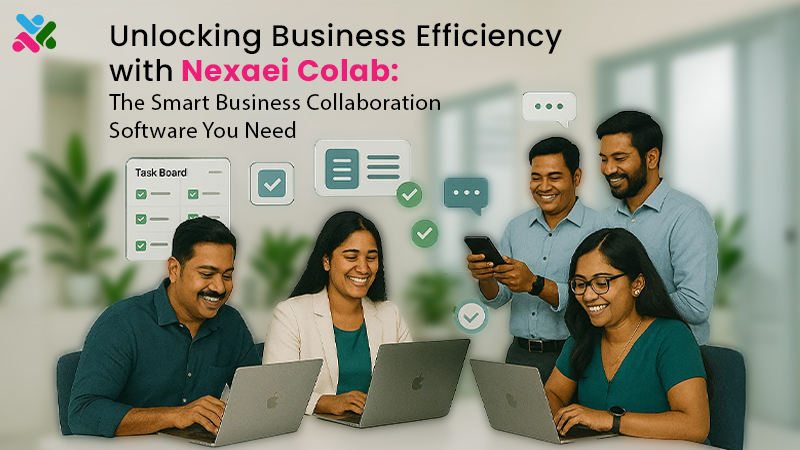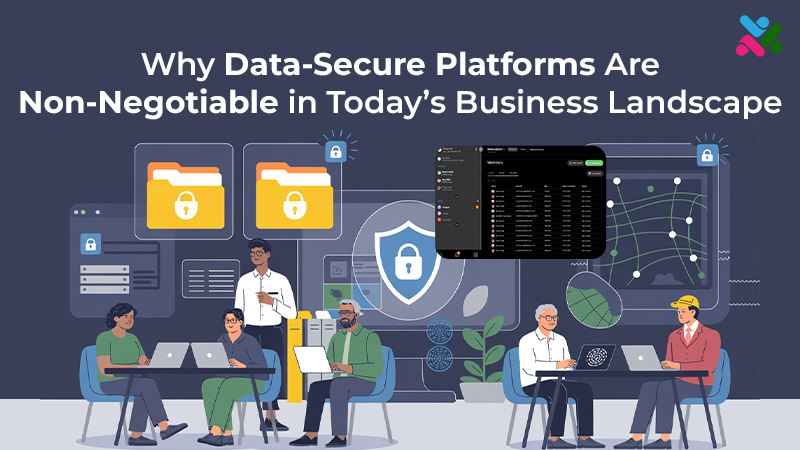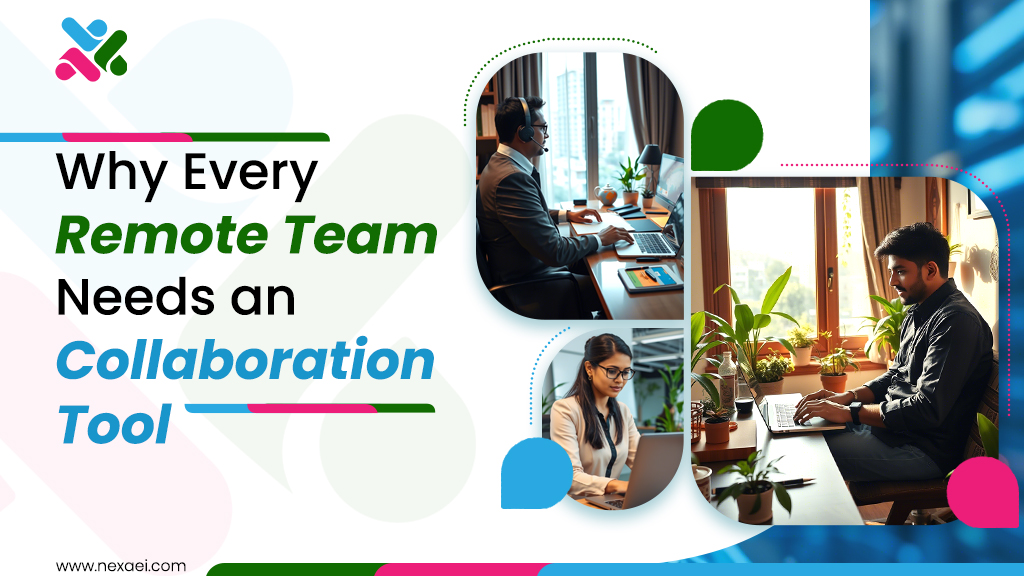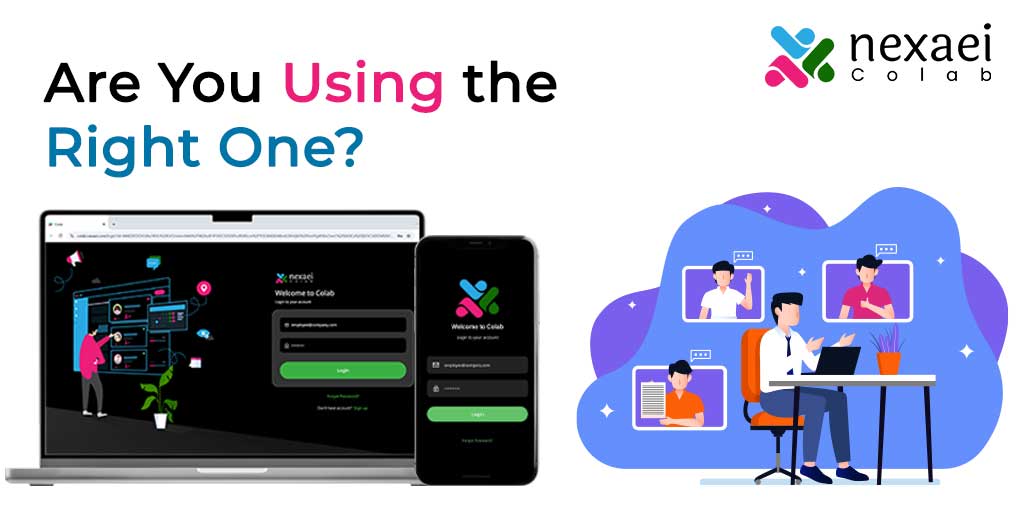The pandemic showed how important it is to have resilient and agile workstream Online collaboration tools. Relying entirely on manual collaboration or standalone tools installed as part of shadow IT no longer cuts it. Instead, a top-tier collaboration tool like NexAEI Colab helps organizations keep pace with and stay ahead of five key workplace trends.
Top Five Reasons your Business Should invest in an Online Collaboration Tool
1. Remote and flexible working is now a key employee demand; Business collaboration tools help you retain and support top talent
Today’s workforce values flexibility, autonomy, and the ability to work from anywhere. Investing in a top-tier collaboration tool can help your organization meet this growing demand for remote and flexible working. These tools offer real-time communication channels, document-sharing platforms, and project management functionalities that enable employees to collaborate seamlessly regardless of their physical location.
By providing your employees with the necessary tools to work remotely, you not only enhance their job satisfaction but also increase retention rates. Employees who have access to efficient collaboration tools feel supported by their organization and are more likely to stay engaged and loyal.
Moreover, supporting remote work through workstream collaboration tools opens up new talent pools for recruitment. You can expand your search beyond geographical limitations and attract top talent from different regions or even globally. This diversity in talent brings fresh perspectives and ideas into your organization while fostering a culture of inclusivity.
Investing in collaboration tools also demonstrates that you prioritize employee well-being and recognize the importance of work-life balance.
Read More: Beat the Productivity Plateau with Team Collaboration & Collaboration Software
2. After the pandemic, workplace culture is at risk; collaboration tools drive engagement and help build community
After the pandemic, many organizations are grappling with the challenge of maintaining a strong workplace culture. With remote work becoming the new norm, it’s easy for employees to feel disconnected and isolated from their colleagues. This is where collaboration workstream collaboration tools come into play.
They have proven to be invaluable in driving engagement and building a sense of community within teams. They provide platforms for constant communication, enabling employees to stay connected regardless of their physical location. Through features like chat and group messages, team members can easily collaborate on projects, share ideas, and offer support.
Moreover, Online collaboration tools foster a sense of inclusivity by breaking down barriers between different departments or hierarchical levels within an organization.
They also facilitate virtual social interactions that help recreate some aspects of in-person office culture. Features like video conferencing or virtual water cooler spaces allow team members to engage in casual conversations or hold virtual events such as happy hours or team-building activities.
By investing in top-tier collaboration tools that prioritize engagement and community-building features, organizations can create a vibrant digital workspace where employees feel connected, motivated, and supported – even when they’re physically apart.
3. Modern businesses suffer from data overwhelm and silos; Business collaboration tools are a great way to aggregate knowledge
With the vast amount of information generated daily, it’s easy for important knowledge to get lost in the shuffle. This can lead to data silos, where different departments or teams hoard valuable insights without sharing them with others. Fortunately, workstream collaboration tools provide an effective solution to this problem.
By investing in a top-tier collaboration tool, your organization can aggregate knowledge and data in one centralized platform. This allows employees from different teams or locations to easily access and contribute to the collective pool of information. Whether it’s project documents, customer feedback, market research, or best practices, everything is stored in one place for everyone to benefit from.
By breaking down data silos, you foster a culture of transparency and knowledge sharing within your company. This helps eliminate unnecessary duplication of efforts as individuals no longer need to spend time searching for information that might already exist elsewhere in the organization.
Read More: The Future of AI-Powered Enterprise Collaboration and its Impact on Business Growth
4. 50% of employees feel meetings are a waste of time, according to Salesforce; collaboration tools are more efficient
According to Salesforce, a staggering 50% of employees feel that meetings are simply a waste of their valuable time. This sentiment is not surprising considering how often meetings can be unproductive, unfocused, and filled with unnecessary chatter.
Enter collaboration tools – the modern solution to streamline communication and make meetings more efficient. With these tools, teams can collaborate in real-time without having to schedule time-consuming face-to-face meetings.
They offer features like chat rooms or group messaging where participants can share ideas, ask questions, and provide updates without interrupting each other’s workflow. And, Business collaboration tools help eliminate the need for excessive back-and-forth emails or phone calls.
5. Frontline employees are central to your productivity; geo-location tagging features help them stay connected
Frontline and field-service employees are often on the move, working directly with customers or managing operations on-site. However, staying connected and productive can be challenging when they are physically distant from their team members and managers.
This is where collaboration tools with geo-location tagging come into play. By using these tools, frontline employees can easily update their location, allowing colleagues to know where they are at any given time. This feature is particularly useful for coordination, ensuring that tasks are assigned efficiently based on proximity and availability.
Further, remote attendance features provided by collaboration tools enable frontline employees to participate in meetings virtually, regardless of their physical location. This eliminates the need for them to travel back to the office for every meeting, saving both time and resources.
Read More: Why Cross-Functional & Cross-Team Collaboration Matters
Choosing a top-tier collaboration tool for your company
With so many collaboration tools available, it’s important to look for specific features that can enhance communication, productivity, and overall efficiency. Chat and group messaging capabilities are essential for real-time communication among team members. Geo-location tagging is another feature that’s becoming increasingly important as more organizations have mobile or field-service teams.
Next, secure file sharing plays a vital role in streamlining workflows and avoiding data silos within an organization. A well-designed UX ties it all together – providing a seamless interface where employees can easily navigate through different features. It reduces the learning curve associated with implementing new tools within an organization and increases adoption rates.
At Nexaei Colab, we partner with companies worldwide to improve productivity via cutting-edge workstream collaboration tools. Its comprehensive feature set and intuitive mobile app make collaboration easier for employees and significantly more value-generating for your company.
Talk to our experts to know more about our ERP-grade platform, Colab.







